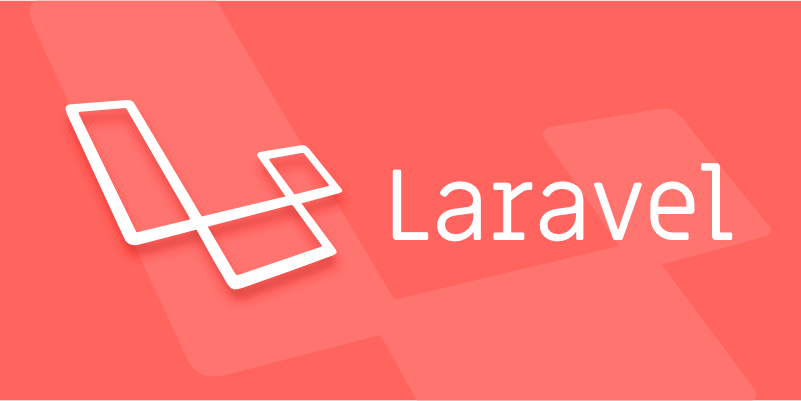Optimize Composer’s autoloader using composer install --optimize-autoloader --no-dev and composer dump-autoload --classmap-authoritative to speed up class loading. 2. Cache configuration and routes in production with php artisan config:cache and php artisan route:cache to reduce bootstrap overhead. 3. Optimize database performance by using eager loading to prevent N 1 queries, adding indexes on frequently queried columns, and caching expensive queries with Cache::remember(). 4. Use Laravel Octane with Swoole or RoadRunner to keep the application in memory, eliminating boot time and enabling high throughput for APIs and heavy traffic. 5. Optimize frontend assets by compiling and versioning with Mix or Vite, minifying CSS/JS, enabling Gzip/Brotli compression, and leveraging browser caching. 6. Offload heavy tasks like emails and file processing to queues using php artisan queue:work and manage workers with Supervisor for better performance. 7. Enable OPcache in PHP with proper settings in php.ini to store precompiled scripts and disable timestamp validation in production for faster execution. 8. Cache Blade templates using php artisan view:cache to avoid recompilation on every request and improve rendering speed. 9. Reduce middleware overhead by removing unnecessary middleware, avoiding heavy logic in global middleware, and using lazy or route-specific middleware where possible. 10. Monitor performance using tools like Laravel Telescope, Debugbar, or APM solutions such as New Relic and Datadog to identify slow queries, memory leaks, and redundant calls, ensuring continuous optimization through measurement and refinement.

Laravel is powerful and developer-friendly, but as your application grows, performance can become a concern. Here are practical optimization tips that can significantly improve your Laravel app’s speed and efficiency.

1. Optimize Autoloader and Composer
Composer’s autoloader can slow down your app if not optimized, especially in production.
Run:

composer install --optimize-autoloader --no-dev
This:
- Dumps an optimized autoloader (uses class maps for faster lookup)
- Excludes development dependencies
Also, consider using classmap authoritative for even faster autoloading:

composer dump-autoload --classmap-authoritative
2. Cache Configuration and Routes
Every time Laravel boots, it loads config files and parses routes. Caching these reduces overhead.
Cache config:
php artisan config:cache
Cache routes:
php artisan route:cache
?? Only run these in production. During development, use
config:clearandroute:clearas needed.
3. Optimize Database Queries
Slow queries are a common bottleneck.
Use Eager Loading
Avoid N 1 queries by preloading relationships:
// Bad: N 1 problem
$posts = Post::all();
foreach ($posts as $post) {
echo $post->user->name;
}
// Good: Eager load
$posts = Post::with('user')->get();Add Indexes
Ensure database columns used in WHERE, JOIN, or ORDER BY clauses are indexed.
Use Query Caching (when applicable)
For expensive, infrequently changing queries:
$users = Cache::remember('users.active', 3600, function () {
return User::where('active', 1)->get();
});4. Use Laravel Octane (for High Performance)
Laravel Octane boots your app once and keeps it in memory using Swoole or RoadRunner.
Benefits:
- Eliminates boot time on every request
- Handles thousands of requests per second
- Great for APIs and high-traffic apps
Install via:
composer require laravel/octane php artisan octane:install php artisan octane:start
Note: Requires additional setup (e.g., Swoole extension) and careful handling of shared state.
5. Optimize Assets and Frontend
Even backend optimizations won’t help if the frontend is slow.
- Use
mix()orvite()with versioning in production - Minify CSS/JS
- Enable Gzip/Brotli compression on your web server
- Leverage browser caching with proper headers
Run in production:
npm run build
6. Use Queue Workers for Heavy Tasks
Move time-consuming tasks (emails, file processing, notifications) to queues.
Use database, Redis, or Amazon SQS:
php artisan queue:work --daemon
Better yet, use Supervisor to manage long-running workers.
7. Enable OPcache (PHP)
OPcache stores precompiled script bytecode in memory, eliminating parsing/compilation on each request.
Ensure it’s enabled in php.ini:
opcache.enable=1 opcache.memory_consumption=256 opcache.max_accelerated_files=20000 opcache.validate_timestamps=0 ; Set to 1 in development
Set
validate_timestamps=0in production to prevent file checks (clear manually after deploy).
8. Cache Views and Blade Templates
Blade compilation can be cached:
php artisan view:cache
This compiles .blade.php files into raw PHP and stores them, reducing parsing time.
Clear when updating templates:
php artisan view:clear
9. Reduce Middleware Overhead
Every middleware adds execution time. Review and remove unnecessary ones.
- Avoid heavy logic in global middleware
- Use route-specific middleware instead of global when possible
- Consider lazy middleware (Laravel 9 ) for conditional loading
10. Monitor and Profile Performance
Use tools to identify bottlenecks:
- Laravel Telescope (for dev)
- Laravel Debugbar
- Application Performance Monitoring (APM) tools like New Relic, Datadog, or Sentry
Look for:
- Slow queries
- Memory leaks
- Redundant HTTP calls
- Large payloads
Basically, Laravel performance tuning is about reducing repeated work—cache what you can, offload what you can, and measure what you can’t see. Most gains come from caching, query optimization, and switching to Octane where appropriate.
The above is the detailed content of Laravel performance optimization tips. For more information, please follow other related articles on the PHP Chinese website!

Hot AI Tools

Undress AI Tool
Undress images for free

Undresser.AI Undress
AI-powered app for creating realistic nude photos

AI Clothes Remover
Online AI tool for removing clothes from photos.

Clothoff.io
AI clothes remover

Video Face Swap
Swap faces in any video effortlessly with our completely free AI face swap tool!

Hot Article

Hot Tools

Notepad++7.3.1
Easy-to-use and free code editor

SublimeText3 Chinese version
Chinese version, very easy to use

Zend Studio 13.0.1
Powerful PHP integrated development environment

Dreamweaver CS6
Visual web development tools

SublimeText3 Mac version
God-level code editing software (SublimeText3)

Hot Topics
 Creating Custom Validation Rules in a Laravel Project
Jul 04, 2025 am 01:03 AM
Creating Custom Validation Rules in a Laravel Project
Jul 04, 2025 am 01:03 AM
There are three ways to add custom validation rules in Laravel: using closures, Rule classes, and form requests. 1. Use closures to be suitable for lightweight verification, such as preventing the user name "admin"; 2. Create Rule classes (such as ValidUsernameRule) to make complex logic clearer and maintainable; 3. Integrate multiple rules in form requests and centrally manage verification logic. At the same time, you can set prompts through custom messages methods or incoming error message arrays to improve flexibility and maintainability.
 Adding multilingual support to a Laravel application
Jul 03, 2025 am 01:17 AM
Adding multilingual support to a Laravel application
Jul 03, 2025 am 01:17 AM
The core methods for Laravel applications to implement multilingual support include: setting language files, dynamic language switching, translation URL routing, and managing translation keys in Blade templates. First, organize the strings of each language in the corresponding folders (such as en, es, fr) in the /resources/lang directory, and define the translation content by returning the associative array; 2. Translate the key value through the \_\_() helper function call, and use App::setLocale() to combine session or routing parameters to realize language switching; 3. For translation URLs, paths can be defined for different languages ??through prefixed routing groups, or route alias in language files dynamically mapped; 4. Keep the translation keys concise and
 Working with pivot tables in Laravel Many-to-Many relationships
Jul 07, 2025 am 01:06 AM
Working with pivot tables in Laravel Many-to-Many relationships
Jul 07, 2025 am 01:06 AM
ToworkeffectivelywithpivottablesinLaravel,firstaccesspivotdatausingwithPivot()orwithTimestamps(),thenupdateentrieswithupdateExistingPivot(),managerelationshipsviadetach()andsync(),andusecustompivotmodelswhenneeded.1.UsewithPivot()toincludespecificcol
 Sending different types of notifications with Laravel
Jul 06, 2025 am 12:52 AM
Sending different types of notifications with Laravel
Jul 06, 2025 am 12:52 AM
Laravelprovidesacleanandflexiblewaytosendnotificationsviamultiplechannelslikeemail,SMS,in-appalerts,andpushnotifications.Youdefinenotificationchannelsinthevia()methodofanotificationclass,andimplementspecificmethodsliketoMail(),toDatabase(),ortoVonage
 Understanding and creating custom Service Providers in Laravel
Jul 03, 2025 am 01:35 AM
Understanding and creating custom Service Providers in Laravel
Jul 03, 2025 am 01:35 AM
ServiceProvider is the core mechanism used in the Laravel framework for registering services and initializing logic. You can create a custom ServiceProvider through the Artisan command; 1. The register method is used to bind services, register singletons, set aliases, etc., and other services that have not yet been loaded cannot be called; 2. The boot method runs after all services are registered and is used to register event listeners, view synthesizers, middleware and other logic that depends on other services; common uses include binding interfaces and implementations, registering Facades, loading configurations, registering command-line instructions and view components; it is recommended to centralize relevant bindings to a ServiceProvider to manage, and pay attention to registration
 Understanding Dependency Injection in Laravel?
Jul 05, 2025 am 02:01 AM
Understanding Dependency Injection in Laravel?
Jul 05, 2025 am 02:01 AM
Dependency injection automatically handles class dependencies through service containers in Laravel without manual new objects. Its core is constructor injection and method injection, such as automatically passing in the Request instance in the controller. Laravel parses dependencies through type prompts and recursively creates the required objects. The binding interface and implementation can be used by the service provider to use the bind method, or singleton to bind a singleton. When using it, you need to ensure type prompts, avoid constructor complications, use context bindings with caution, and understand automatic parsing rules. Mastering these can improve code flexibility and maintenance.
 Strategies for optimizing Laravel application performance
Jul 09, 2025 am 03:00 AM
Strategies for optimizing Laravel application performance
Jul 09, 2025 am 03:00 AM
Laravel performance optimization can improve application efficiency through four core directions. 1. Use the cache mechanism to reduce duplicate queries, store infrequently changing data through Cache::remember() and other methods to reduce database access frequency; 2. Optimize database from the model to query statements, avoid N 1 queries, specifying field queries, adding indexes, paging processing and reading and writing separation, and reduce bottlenecks; 3. Use time-consuming operations such as email sending and file exporting to queue asynchronous processing, use Supervisor to manage workers and set up retry mechanisms; 4. Use middleware and service providers reasonably to avoid complex logic and unnecessary initialization code, and delay loading of services to improve startup efficiency.
 Handling exceptions and logging errors in a Laravel application
Jul 02, 2025 pm 03:24 PM
Handling exceptions and logging errors in a Laravel application
Jul 02, 2025 pm 03:24 PM
The core methods for handling exceptions and recording errors in Laravel applications include: 1. Use the App\Exceptions\Handler class to centrally manage unhandled exceptions, and record or notify exception information through the report() method, such as sending Slack notifications; 2. Use Monolog to configure the log system, set the log level and output method in config/logging.php, and enable error and above level logs in production environment. At the same time, detailed exception information can be manually recorded in report() in combination with the context; 3. Customize the render() method to return a unified JSON format error response, improving the collaboration efficiency of the front and back end of the API. These steps are






